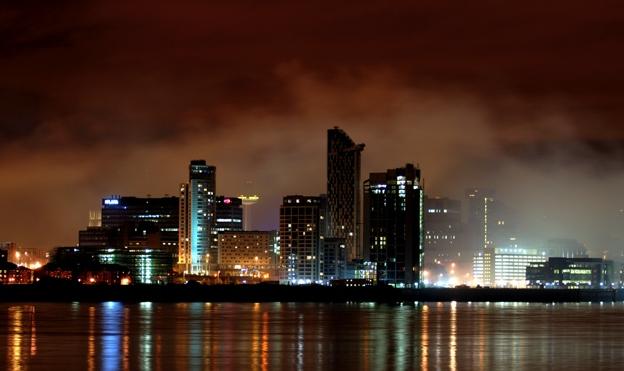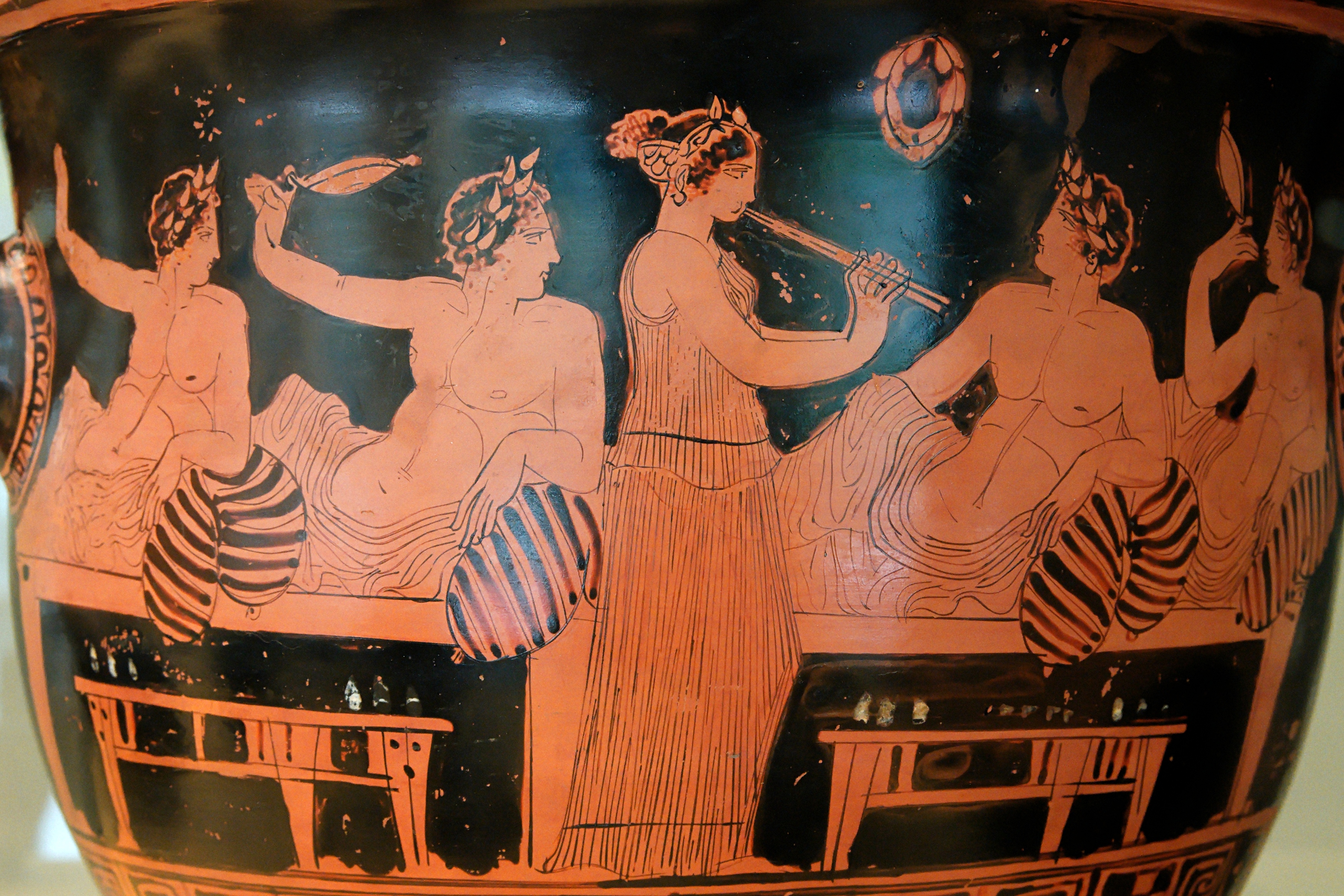|
RopeWalks, Liverpool
RopeWalks is a name given to a vicinity of Liverpool city centre that runs from Lydia Ann Street to Renshaw Street widthways, and from Roscoe Street to Hanover Street lengthwise. The name is derived from the craft of rope-making for sailing ships that dominated the area until the 19th century. It is characterised by its long, straight streets running parallel to each other. The streets were built in this way to allow rope manufacturers to lay the ropes out lengthways during production. There are a number of historic warehouse buildings and it owes much of its character to the rope-making industry. The area includes the Foundation for Art and Creative Technology, Europe's oldest established Chinatown, the grand façade of St. Luke's bombed-out Church, and a number of cafés, bars and clubs. Ropes were made in fields but ropemakers bought or rented thin long strips of land. It was the sale of these thin strips, one by one at different times, that led to long thin streets with few ... [...More Info...] [...Related Items...] OR: [Wikipedia] [Google] [Baidu] |
Liverpool City Centre
Liverpool city centre is the commercial, cultural, financial and historical centre of Liverpool, England. The inner city districts of Vauxhall, Everton, Edge Hill, Kensington and Toxteth mark the border with Liverpool city centre which consists of the L1, L2 and L3 postal districts. The population of the city centre has grown dramatically to around 36,000. Liverpool was granted borough status in 1207, and the original seven streets of the settlement can now be found within the commercial district of Liverpool city centre. Many of Liverpool's most famous landmarks are located in the city centre and in 2006 Liverpool was visited by 625,000 international visitors alone, making it the fourth most visited city in the United Kingdom. Six areas within Liverpool city Centre form the Liverpool Maritime Mercantile City which is a former UNESCO designated World Heritage Site. Liverpool city centre is one of the most architecturally significant locations in the country. Examples of arch ... [...More Info...] [...Related Items...] OR: [Wikipedia] [Google] [Baidu] |
Foundation For Art And Creative Technology
FACT Liverpool is a new media arts centre in Liverpool, England. The building houses galleries, a cinema operated by Picturehouse, a bar and a café. History FACT was established as an organisation focussed on video and new media art, exhibiting and curating the work of artists that had little platform in the UK. FACT was designed by architectural firm Austin-Smith:Lord. When FACT first opened in 2003, it was Liverpool's first new arts building in over 60 years, since the opening of the Liverpool Philharmonic Hall over 60 years prior. FACT is an exhibitor and producer of video and digital art, and had its 15th birthday in 2018. FACT's first exhibition, Isaac Julien’s ''Baltimore'', was commissioned for the opening of the building and continued to tour for the next decade. Since then, FACT has presented over 350 new media and digital artworks from artists including Pipilotti Rist, Nam June Paik, Haroon Mirza, Agnes Varda, Wu Tsang and Apichatpong Weerasethakul. Exhibitio ... [...More Info...] [...Related Items...] OR: [Wikipedia] [Google] [Baidu] |
Chinatown, Liverpool
Chinatown is an area of Liverpool that is an ethnic enclave home to the oldest Chinese community in Europe. Located in the south of the city centre, Chinatown has many Chinese businesses, such as Chinese restaurants and supermarkets, and facilities for the Chinese community. The area is also notable for its Chinese-style architecture; with the paifang on Nelson Street being the largest, multiple-span arch of its kind outside China. History Establishment The first presence of Chinese people in Liverpool dates back to 1834 when the first vessel direct from China arrived in Liverpool's docks to trade such goods as silk and cotton wool. Many Chinese immigrants first arrived in Liverpool in the late 1860s as a result of Alfred Holt and Company employing large numbers of Chinese seamen while establishing the Blue Funnel Shipping Line. The commercial shipping line created strong trade links between the cities of Shanghai, Hong Kong and Liverpool; mainly importing silk, cotton and tea. ... [...More Info...] [...Related Items...] OR: [Wikipedia] [Google] [Baidu] |
Church Of St Luke, Liverpool
St Luke's Church, more commonly known by locals as the bombed-out church, is a former Anglican parish church in Liverpool, England. It stands on the corner of Berry Street and Leece Street, at the top of Bold Street. The church was built between 1811 and 1832, and was designed by John Foster, Sr. and John Foster, Jr., father and son who were successive surveyors for the municipal Corporation of Liverpool. In addition to being a parish church, it was also intended to be used as a venue for ceremonial worship by the corporation and as a concert hall. The church was badly damaged by bombs during the Liverpool Blitz in 1941 and has been a roofless shell ever since, giving rise to its nickname. It now stands as a memorial to those who died in the war, and has also been hired as a venue for exhibitions and events. The church and its surrounding walls, gates, and railings are recorded in the National Heritage List for England as designated Grade II* listed buildings. Hist ... [...More Info...] [...Related Items...] OR: [Wikipedia] [Google] [Baidu] |
Ropewalk
A ropewalk is a long straight narrow lane, or a covered pathway, where long strands of material are laid before being twisted into rope. Due to the length of some ropewalks, workers may use bicycles to get from one end to the other. Many ropewalks were in the open air, while others were covered only by roofs. Ropewalks historically were harsh sweatshops, and frequently caught fire, as hemp dust ignites easily and burns fiercely. Rope was essential in sailing ships and the standard length for a British Naval Rope was . A sailing ship such as required of rope. Rope-making technology Natural fibres are short in length, and so have to be twisted together into different fibres, starting at different points along the construction, to hold each other together. From a single strand, much like wool, which can easily be torn apart, putting several together forms a line, which is far stronger. That can similarly be repeated time and again, producing a very strong rope, at the cost ... [...More Info...] [...Related Items...] OR: [Wikipedia] [Google] [Baidu] |
Entertainment Districts In The United Kingdom
Entertainment is a form of activity that holds the attention and interest of an audience or gives pleasure and delight. It can be an idea or a task, but is more likely to be one of the activities or events that have developed over thousands of years specifically for the purpose of keeping an audience's attention. Although people's attention is held by different things because individuals have different preferences, most forms of entertainment are recognisable and familiar. Storytelling, music, drama, dance, and different kinds of performance exist in all cultures and were supported in royal courts and developed into sophisticated forms, over time becoming available to all citizens. The process has been accelerated in modern times by an entertainment industry that records and sells entertainment products. Entertainment evolves and can be adapted to suit any scale, ranging from an individual who chooses a private entertainment from a now enormous array of pre-recorded prod ... [...More Info...] [...Related Items...] OR: [Wikipedia] [Google] [Baidu] |




